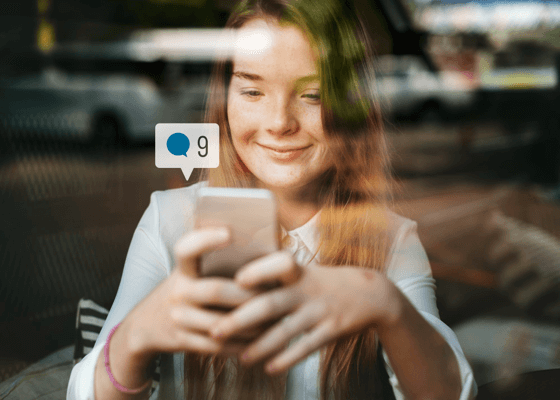I know there are a million and one social media marketing tactics being touted by the experts.
And I have no doubt that some of them work like gangbusters, too.
But most of them, frankly, don’t.
And of all the techniques that do work, a common denominator is a giant time suck that makes social media marketing more of a job than something you do on the side to build your following, grow your prospect list and eventually make more sales.
So today I’m going to share my #1 social media marketing hack with you, and before I do, I’d like to offer you a word of caution:
While this works well with building your audience, there is also something about it that is just a little bit… inauthentic. Your social media audience KNOWS that you are not staring at your screen and waiting with bated breath for their response to your latest post. And yet they want, or on some level even need, for you to PAY ATTENTION to them and CARE about what they think.
Let’s take a far-out example to illustrate: If you were a movie star, and I mean an A-list movie start like Al Pacino or Meryl Streep or Tom Hanks, people wouldn’t expect you to actually respond to them on social media. But if you did respond to them, or even if you just appeared to respond or even appeared to care what they think, it would probably make their day if not their month. “OH MY GOD TOM CRUISE REPLIED TO MY TWEET!”
You get the idea.
You already instinctively know what I’m about to tell you, although you probably haven’t utilized it effectively.
Successful social media marketing comes down to establishing parasocial relationships with your followers.
Parasocial is a fancy term for a relationship that a person imagines they have with another person whom they do not actually know, such as with a celebrity or a fictitious character.
Your goal is to get your audience to engage with your social media marketing personality in a manner that is meaningful to them but doesn’t take up much of your time or tax you emotionally.
In essence, you’re making people think you care about them (and maybe you really do) but you’re not actually engaging with them on a personal one-to-one basis.
Your followers will know – at least subconsciously – that you and they are not besties, but it won’t matter. They will still get enjoyment out of the relationship and a bond will be built between them and your brand.
Here’s how that might work in your business:
1: Get your followers talking about themselves in a way that relates to your business. For example, if you’re an office productivity expert, ask them, “What do you see as the biggest waste of time in your office that no one seems to care about?”
A question like this includes not just your own customers but also anyone who works in an office and would like to vent about their own personal time-wasting pet peeve. This allows your audience to engage in a way that is meaningful to them, regardless of whether or not they’ve read your book, taken your course or hired you as a consultant.
2: Any response you give, no matter how minimal, will make the poster feel good. You’ve probably noticed it yourself when you post on social media and the creator replies with even just an emoji, there is a part of you that is saying, “Yeah, they recognized me! They noticed I exist!” It feels good.
Of course, you can always hire someone to respond to posts. And for those posts that you especially like, you can type out a full response to spark another conversation. When you do, others will notice and be more inclined to engage as well.
Response is important – or even crucial – but it’s also a balancing act. If you try to give a thoughtful response to everyone, you’ll never had time for anything else. Plus, you’ll be seen as too accessible which will lower your perceived value.
“If everyone is special, then no one is special.” You’ve got to make your followers work to get your attention. Let them compete to have the best answers or the answers that spark you to reply.
The highest form of competition for your attention? Sales. You might want to give a shout out to those who buy from you or ask them to post when they do buy. This shows others that people are buying your product and that you give your customers more of your personal attention, thereby creating even more sales and hopefully a snowball effect.
3: Your goal in social media is to cultivate parasocial relationships on a mass level. This means it’s about the prospects and customers and NOT about you or your product. Your focus is on the audience you are building.
Post content that engages your current audience while bringing in a new audience. Foster a sense of community. Remember to ask relevant questions that potential prospects can answer and not just your current customers.
Doing all of this is easier than it sounds – it just takes practice. And the results of a well-executed parasocial relationship with your audience can be shocking. I’ve seen social marketers increase their engagement by several hundred percent within days of using this technique.
